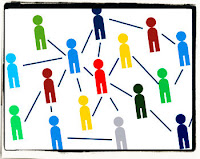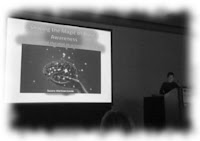Speaking: When it's Time to Lose the Slides

In the business world most presentations are accompanied by Powerpoint or Keynote slides. This is so much taken for granted that the first instinct of many people when they are asked to speak is to put together a slide deck. Yet there are many cases where it can be more effective to present without slides. This approach has several advantages. First of all it reduces the amount of preparation overhead. Look around the offices of any large business and you will quite often see people spending way too much time on this activity. I have often wondered what would happen if presentation software could log and report hours of activity so that an organization could measure the overall cost of slide preparation. Better still, not only does it eliminate the time spent making slides, it also gives you more flexibility during the delivery, where you can pivot the presentation more easily in response to previous presentations or inputs from the audience. Perhaps a comment by someone else...






















